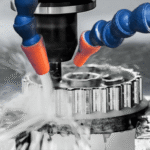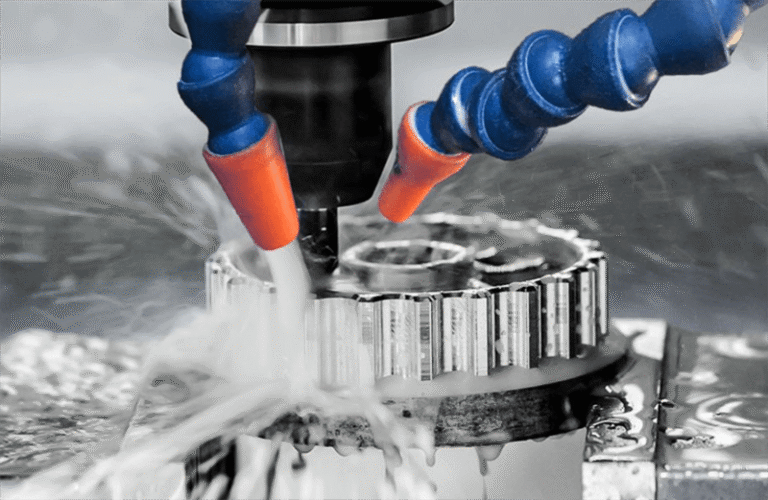Arthroscopy is a minimally invasive surgical procedure used to diagnose and treat joint problems. This technique involves inserting a small camera, called an arthroscope, into the joint through a small incision. The camera sends real-time images to a monitor, allowing surgeons to examine the joint and perform repairs using specialized instruments. One of the most common uses of arthroscopy is for ACL reconstruction surgery, a procedure performed to repair a torn anterior cruciate ligament (ACL) in the knee. This article delves into the procedure of arthroscopic ACL reconstruction surgery, the expected results, recovery, and costs associated with the surgery.
ACL reconstruction surgery
In an arthroscopic ACL reconstruction surgery, the surgeon uses an arthroscope to guide the procedure and ensure precision. Activities such as sports or accidents can tear the ACL, a ligament in the knee that connects the femur (thigh bone) to the tibia (shin bone). A torn ACL often requires surgical repair, and arthroscopic ACL reconstruction surgery has become the gold standard for this type of surgery due to its minimally invasive nature.
The Procedure of Arthroscopic ACL Reconstruction Surgery
1. Preparation: Before the surgery, the patient will undergo a thorough evaluation, including a physical exam, imaging tests (such as MRI), and a discussion of medical history. This is to confirm the diagnosis and plan the best approach for the surgery.
2. Anesthesia: Arthroscopic ACL reconstruction is performed under general anesthesia or regional anesthesia, depending on the patient’s condition and the surgeon’s preference. General anesthesia ensures that the patient is asleep and pain-free during the procedure.
3. Incisions: The surgeon makes small incisions (about 12 cm) around the knee joint to insert the arthroscope and surgical instruments. These incisions are much smaller compared to the larger incisions required in traditional open surgery.
4. Visualizing the Joint: The arthroscope, which contains a camera, is inserted into one of the incisions, allowing the surgeon to view the interior of the knee on a monitor. This visualization helps the surgeon assess the extent of the ACL damage and determine the most effective treatment plan.
5. Removing the Damaged ACL: The surgeon will remove the damaged ACL tissue using specialized instruments. The procedure may also involve cleaning up any other damaged tissue in the knee, such as the meniscus or cartilage, if necessary.
6. Harvesting Graft Tissue: In most cases, a graft is used to replace the torn ACL. This graft can be taken from the patient’s own body (autograft), commonly from the hamstring tendon or patellar tendon, or from a donor (allograft). The choice of graft depends on the patient’s needs, activity level, and the surgeon’s recommendation.
7. Reconstructing the ACL: Once the graft is prepared, the surgeon uses the arthroscope and other instruments to carefully position the graft and secure it in place using screws or other fixation devices. This restores the function of the knee and provides stability.
8. Closing the Incisions: After the graft is in place, the incisions are closed with sutures or adhesive strips. The knee may be bandaged, and the patient will be monitored as the anesthesia wears off.
Results of Arthroscopic ACL Reconstruction Surgery
Arthroscopic ACL reconstruction surgery is highly successful, with most patients experiencing significant improvement in knee stability and function. The procedure aims to restore the patient’s ability to return to daily activities and sports. Some key points about the results include:
Knee Stability: The primary goal of the surgery is to restore knee stability, which is crucial for preventing further damage to the knee joint.
Pain Relief: Most patients report a significant reduction in knee pain following the surgery, although there may be some discomfort during the recovery period.
Return to Activity: After rehabilitation, many individuals can return to their preinjury levels of activity, including sports. However, the timeline for returning to high-impact activities may vary.
Success Rates: The success rate for arthroscopic ACL reconstruction surgery is generally high, with studies showing that around 8090% of patients experience good to excellent outcomes. However, the result depends on factors such as the severity of the tear, the patient’s age, activity level, and adherence to the rehabilitation program.
Recovery After Arthroscopic ACL Reconstruction Surgery
Recovery after arthroscopic ACL reconstruction surgery is a gradual process that typically takes several months. Here’s what you can expect during recovery:
1. Immediate PostSurgery: After surgery, patients typically stay in the hospital for a few hours or overnight. Pain management will be provided, and the knee will be wrapped in a compression bandage to reduce swelling. Crutches are usually necessary for a few days to help with mobility.
2. Physical Therapy: Rehabilitation begins shortly after surgery, with a focus on reducing swelling, regaining motion, and strengthening the muscles around the knee. A physical therapist will guide the patient through exercises that help restore normal knee function. Therapy is an essential part of recovery and can last for several months.
3. Gradual Return to Activity: Full recovery can take anywhere from 6 to 12 months, depending on the individual’s age, overall health, and commitment to rehabilitation. Light activity is usually allowed after a few weeks, while more strenuous activities and sports may need to wait until the knee has fully healed.
4. Long-Term Outcomes: Most patients regain full knee function and can return to normal activities, including sports. However, it’s essential to follow the rehabilitation protocol to avoid complications, such as reinjury or prolonged pain.
Cost of Arthroscopic ACL Reconstruction Surgery
ACL reconstruction surgery cost can vary widely depending on factors such as the surgeon’s experience, geographic location, and whether the patient has insurance coverage. On average, the cost of arthroscopic ACL reconstruction surgery can range from $5,000 to $20,000. This estimate may include the cost of the surgeon’s fee, anesthesia, hospital stay, and rehabilitation services. Insurance may cover a significant portion of the cost, but out-of-pocket expenses can still be substantial.
Conclusion
Arthroscopic ACL reconstruction surgery is a highly effective procedure that helps patients recover from torn ACLs and regain knee function. With its minimally invasive nature, it offers reduced pain, quicker recovery, and fewer complications compared to traditional open surgery. While the recovery process requires time and dedication, most patients achieve excellent results and return to their previous activity levels. However, it is important to be mindful of the costs, which can vary depending on location and insurance coverage. Proper rehabilitation and care following surgery are crucial to achieving the best possible outcomes.
For more(click here)





















